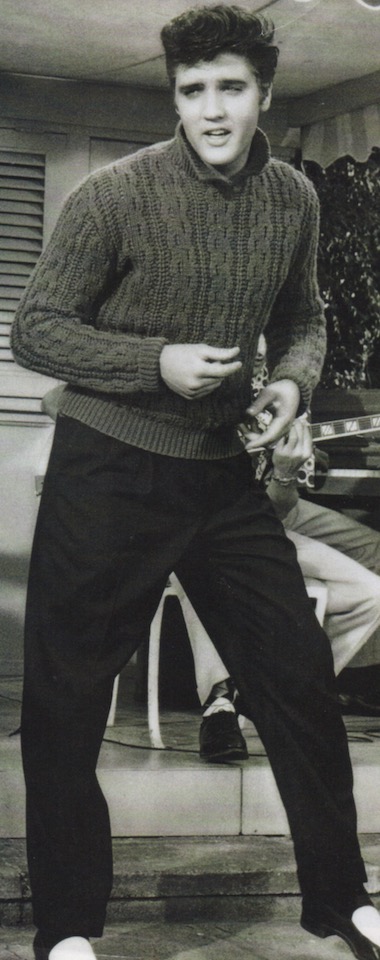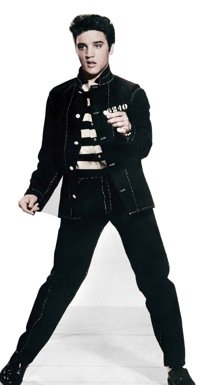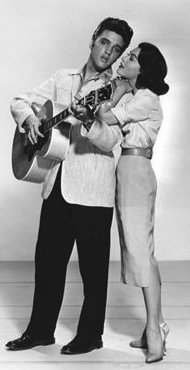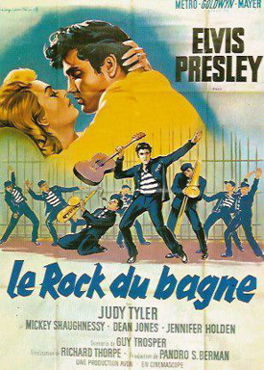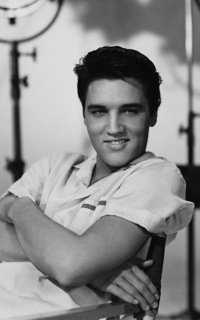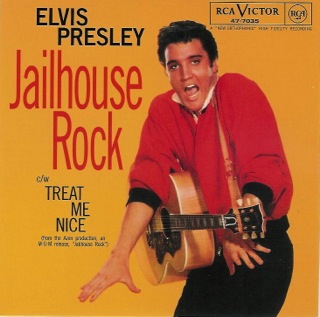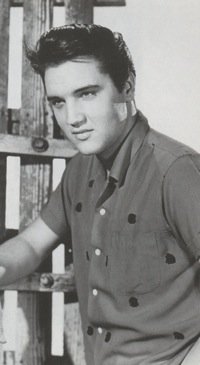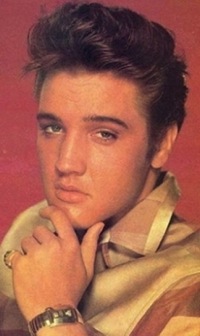Elvis History Blog
Behind the Scenes of …
Jailhouse Rock
Elvis Presley's 1957 MGM Film
In late February 1957, while Elvis was in Hollywood still working on his second film, Paramount’s Loving You, his manager was already feeding the Memphis newspapers details about his client’s next movie. “Elvis Presley will make his third beginning May 1 for Metro-Goldwyn-Mayer,” reported "The Memphis Commercial Appeal." Colonel Tom Parker described it as “the biggest deal ever made in Hollywood.” The agreement called for Elvis to receive $250,000, plus 50 percent of all profits after the picture’s initial costs had been met.”
Back in Hollywood, the race was on among the city’s entertainment columnists to get more details. Shooting on the film, to be produced by Pandro Berman and directed by Richard Thorpe, was scheduled to begin May 1. Producer Berman explained, “Presley will be starred as dead-end-type kid who winds up in prison where an older convict helps him develop a singing talent. The story has to do with the sudden rise of a young singer whose success goes to his head and who has to learn the hard way that money, alone, is worth little without the understanding of fellow human beings.”
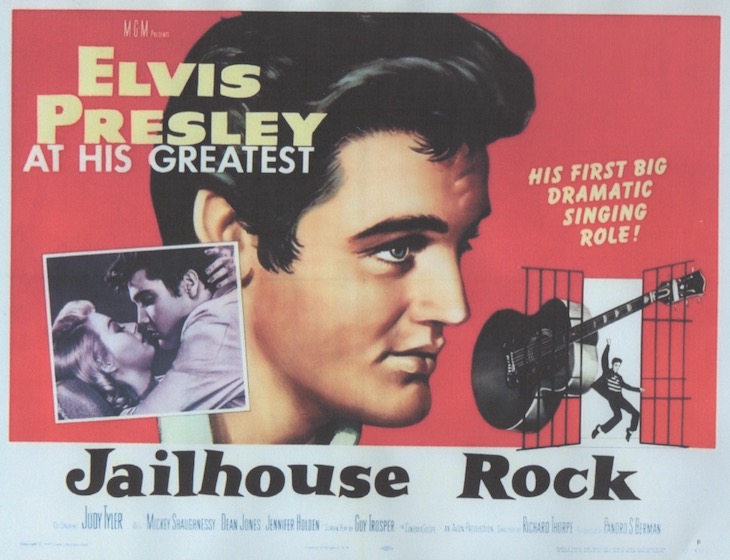
The name of the new Presley film fluctuated. In his April 26 article in the "Los Angeles Times," Edwin Schallert reported, “The new Elvis Presley film at MGM will be called ‘Treat Me Nice,’ because that is one of his seven new songs that is expected to be a humdinger in sales. So after a peculiar evolution beginning from ‘Jailhouse Rock,’ which was changed to ‘The Jailhouse Kid’ and briefly to ‘The Hard Way,’ this … effort finally has a name.” However, on May 7, columnist Louella Parsons revealed that an “avalanche of fan protests” had convinced MGM to change the film’s name back to Jailhouse Rock.
Parsons also got Director Thorpe to provide details about what was in store for Elvis’ character in the film. “First, (in the plot) Elvis loses his voice and goes through a psychological fixation that he can’t sing. Also, he has to sing three songs very badly and like an amateur to point up his improvement later on. And last, the singing idol gets in a whale of a fistfight with Mickey Shaughnessy, which he DOESN’T win! All this, plus his sideburns coming off, is a big switch for Presley.”
(Of director Thorpe, Elvis would later say, “I’m new in the picture business, but working with Mr. Thorpe has helped me a lot. I hope I repaid him with a good performance.”)
• The Presley Hair Controversy
In a press conference prior to his March 8 stage show in Chicago, Elvis confirmed he’d soon be getting a major haircut. A United Press correspondent explained, perhaps a bit gleefully:
“Elvis Presley, of the duck-tailed, rock’n’roll coiffure, will soon be wearing his hair shorter than that of a ‘houn’ dawg.’ Presley made the announcement here shortly before more than 13,000 wild-eyed teenagers in a one-night stand at Chicago’s International Amphitheatre. So, unless Uncle Sam replaces the singer’s gold lame suit with one of olive drab before his next picture gets rolling, it will be a studio makeup man who shears the wavy, side-burned locks instead of an Army barber.”
Within a couple of days after Elvis first reported to MGM’s Hollywood studio on May 6 to begin work on Jailhouse Rock, producer Berman had made arrangements for his star’s haircut. The details went out to the Hollywood press.
“Elvis Presley’s movie studio issued a communiqué yesterday that it has picked a filmland barber to brave the wrath of teenage disciples by shearing the sideburned rock ’n’ roller in a movie. Metro-Goldwyn-Mayer Producer Pandro S. Berman tapped Joseph Bullaro for the job, largely on the basis of experience. Bullaro has trimmed such celebrities as Bing Crosby — just a little on the sides — and Clark Gable. He will give undulating Elvis the full business — a ‘butch’ haircut — in Presley’s forthcoming picture ‘Jailhouse Rock.’ Bullero will play a prison barber, and Elvis a prisoner.”
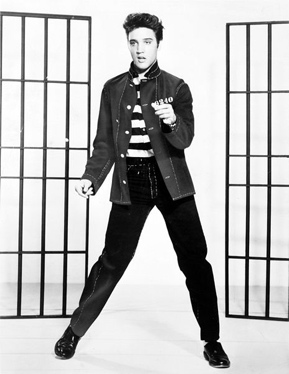
• Elvis and his entourage settle in at fancy hotel
After arriving in Los Angeles on April 28, following a long train ride from Memphis, Elvis checked into the penthouse apartment and the presidential suite of the Beverly Wilshire Hotel. A Memphis retinue, consisting of Junior Smith, George Klein, Arthur Hooton, and Bitsy Mott, accompanied him. (Another Memphis friend, Lamar Fike, arrived unannounced on May 18 and joined Elvis’ entourage.)
Two days later, Elvis started work on the film’s soundtrack at Radio Recorders studio. There he first met Jerry Leiber and Mike Stoller, who had written songs for the movie. The goal was to prepare nine songs, from which Producer Berman would choose six for Presley to sing in the film.
Meanwhile, back at the Beverly Wilshire, Elvis’ crew was settling in nicely. A local reporter described the scene.
“Elvis Presley is back in town for another movie and this time he brought eight (sic) of his buddies with him from Memphis, instead of only two as last time. Two of them are cousins. They’re all ensconced in the top floor of a plush Beverly Hills hotel and living it up like crazy, man. One chum told me it’s nicking Elvis better than $40 a meal just to feed them. ‘You should see the boys with those double orange juices, steaks and eggs and hotcakes in the morning.’”
• Youthful supporting cast joins Elvis
During his first few days on the set, Elvis met the other five principal actors in Jailhouse Rock. Judy Tyler was chosen from the many actresses who were tested to be Elvis’ leading lady. A Broadway girl, Tyler had starred for seven months in the New York City production of “Pipe Dream.” This was to be her first film in a long-term MGM contract. Her role in Jailhouse Rock was that of a young exploitation-girl for a record company who discovers Elvis when he is released from prison.
Tyler commented on Elvis in Vernon Scott’s Hollywood column of June 14, 1957.
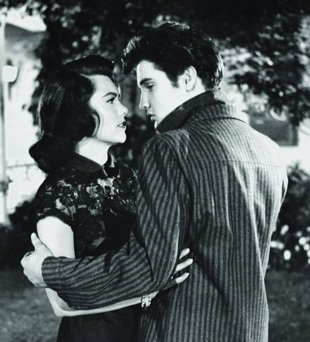
“I only met him two weeks ago when I reported for work. It was in the wardrobe department and I was really thrilled. Two hours after we were introduced we had a date. We talked about our careers and Elvis’ new home. We even sang a few songs. He’s the most popular singer in the country today because he’s sincere. Elvis is warm and friendly — and he’s got a pixie side, too. Starring with Elvis is a turning point in my career. I have a deal to make more pictures from Metro. And I’ve learned a lot about acting from Elvis.”
Mickey Shaughnessy was signed to be Elvis’ “criminal mentor” in Jailhouse Rock. A veteran in show business, Shaughnessy paid his dues as a comedian in saloons. After a sojourn in the army, he returned to work in nightclubs, climbing up in class. After appearances in several movies, Shaughnessy was cast in MGM’s Elvis movie.
Former Chicago model Jennifer Holden was making her movie debut in Jailhouse Rock. In the press, the sultry-eyed blonde was said to have won out against some “spirited competition” to get the coveted brief but intensely romantic role with Elvis.
The other two principal acting roles went to Dean Jones as disc jockey Teddy Talbot and Anne Neyland as a Presley love interest.
The six main actors in Jailhouse Rock made up one of the youngest casts in Hollywood at the time. The average age of the six principals in the MGM film — Elvis (22), Judy Tyler (24), Mickey Shaughnessy (36), Dean Jones (26), Jennifer Holden (20), and Anne Neyland (22) — came out to 25 years. If the “old man” (Shaughnessy) is taken out of the pool, the average age of the other five was only 23.
• A production number and a tooth cap
After Elvis reported for work at the MGM studio on May 6, 1957, he had a week to prepare before the scheduled start of principal photography on May 13. Since the “Jailhouse Rock” production number was the first scene on the shooting schedule, Elvis spent much of the previous week preparing for his part in it. The story of how the production number was choreographed has often been told. Elvis’ Memphis buddy, George Klein, witnessed the back-and-forth between Elvis and choreographer Alex Romero, and so Klein’s description in his book “Elvis: My Best Man” is the most complete account of what happened.
Klein says that when Romero and Elvis first met, Romero demonstrated a “smooth, powerful style” dance sequence for Elvis to do to the beat of “Jailhouse Rock.” Elvis tried it, but Klein explained that Elvis didn’t like it. “I can’t do that,” Elvis said. “It’s just not me. I’m a rock’n’roll guy. I can’t move like Gene Kelley.”
Romero asked Elvis to get some of his records from his dressing room. After George retrieved them, Romero told Elvis, “Here’s what I want you to do. George is going to play the music, and you get up like you’re on stage. Use the microphone and show me what you do in concert.”
“I played ‘Don’t Be Cruel’ and ‘All Shook Up’,” George recalled, “and Elvis went through all the best moves he’d been using on stage while he was on tour — wind-milling his arms, working his hips and shaking his legs, snapping into dramatic poses in time with the music, and cutting loose with some knee slides on the floor.”
“I’ve got it,” Romero declared. “Meet me back here tomorrow.”
“The next day,” according to George, “Romero cued up ‘Jailhouse Rock’ again and went through a new dance sequence … What we saw was a stroke of brilliance. Romero had taken all of Elvis’ natural stage moves and turned them into a routine that fit what needed to be done in the scene.”
“That’s me, man,” Elvis responded. “I can do that all day long.”
• The tooth cap caper
Full rehearsals of the ‘Jailhouse Rock’ production number began on May 13. The following day the cast was still working on it, when work came to a sudden stop. While sliding down a pole from the upper level of jailhouse set, one of Elvis’ tooth caps came loose and slid down his windpipe, lodging in his right lung. He was taken to Cedars of Lebanon Hospital, where doctors used a bronchoscopy procedure (the insertion of a narrow tubular instrument down into the throat) to remove the cap. No surgical incision was made.
“He’s feeling fine and would like to get out,” a studio spokesman said, “but doctors feel he should stay in the hospital at least through today for observation in order to make sure there are no complications.” Although the object was removed without difficulty, Presley was reported to have “a sore throat” as a result of the irritation from the use of the bronchoscope. Elvis was released from the hospital on Sunday, May 17. On leaving, he announced he would be back to work the next day, “if I don’t swallow the rest of my teeth.”
• A Typical Day for Elvis while working on Jailhouse Rock
After the “Jailhouse Rock” production number was completed, three weeks remained to complete the movie’s filming. Hollywood reporter Jerry Davis described one typical day’s work for Elvis during that period. Davis began by noting that Elvis’ workday “bore little resemblance to any other movie star in Hollywood.”
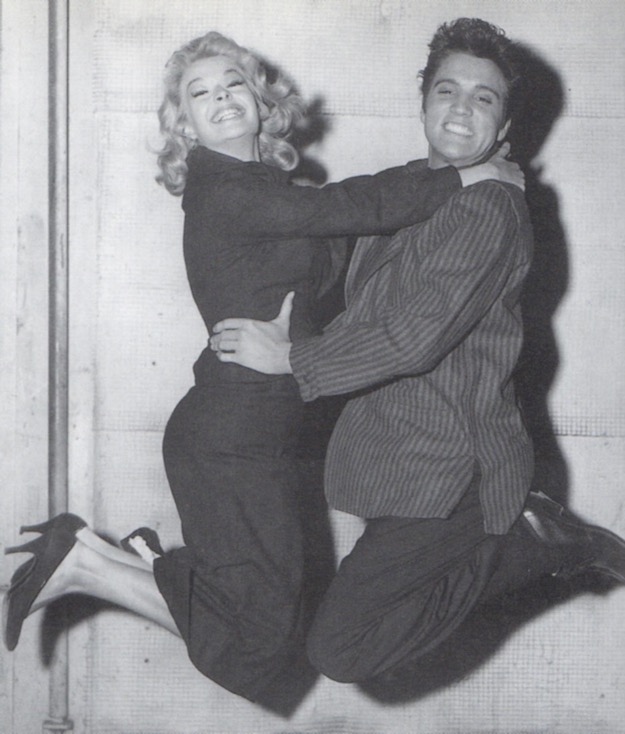
“Rock’n’roll music on the clock radio next to his bed awoke Elvis at about 6:30 a.m. After turning down the volume, Elvis used the hotel phone in his room to order his usual breakfast — cereal, bananas, and two quarts of milk.
(Right: Jennifer Holden and Elvis)
“After getting out of bed, Elvis entered the adjoining rooms of his Beverly Hills hotel suite and aroused the other members of his personal ‘troupe.’ These included two cousins and four high school friends who live with him and serve various functions in Presley’s world.
“Following breakfast with his ‘troupe,’ Elvis turned on the record player and listened to his recording of ‘Treat Me Nice,’ a song he would be singing later in the day for a scene in Jailhouse Rock. After a few bars, Elvis began singing along with it.
“After the record ended, Elvis quickly walked to his room and selected from his extensive wardrobe a Kelly-green sport shirt, a light green pair of slacks, and a pair of light green suede shoes. He left them hanging outside the closet door and took a quick shower.
“At 7:30 he left with his entourage for MGM studios. A group of girls were waiting for him outside the hotel. They ran toward him screaming ‘There’s Elvis!’ As the boys piled into a black Cadillac, Elvis signed autographs, rumpled their hair, and shooed them off to school.
“Then he drove to the studio and reported to the wardrobe department. He was on the sound stage at 8:30 to begin a scene with a new actress, Anne Neyland. After one rehearsal, director Richard Thorpe said, ‘All right, kids, this is a take.’ It required three takes before Thorpe was satisfied the scene was perfect.
“After the scene, Elvis smiled when Anne complimented him on how little his success had changed him. ‘Just because I managed to do a little something,’ he explained, ‘I don’t want anyone to think I’ve got a big head. I especially want my folks back home to think right of me.’
“Lunch, consisting of pork chops, mashed potatoes, apply pie, and more milk, was served in his dressing room at noon. He returned to the set promptly at 1:00.
“After returning to his hotel suite, Elvis dialed up room service. ‘Miss — this is Elvis Presley. The usual, please.’ The ‘usual’ meant a sandwich, which consisted of french-fried potatoes, a layer of tomatoes, and a third layer of burnt bacon, with two more quarts of milk.
“After dinner, Elvis relaxed by playing pool with the boys on a table he had installed in the suite. Then, from 9:00 to 11:00, he studied the next day’s scenes before piling into bed.”
• Fans saved Elvis’ hair from MGM barber
After Presley’s fans swamped MGM with 4,000 postcards and letters begging the studio to let Elvis act with his original hair, Berman and Thorpe relented and cancelled the shearing of his wavy hair and sideburns. Hollywood reporter Aline Mosby got word of the haircut clemency directly from Elvis:
“So now the studio has decided I’ll wear a wig, a crew-cut wig, for the prison scenes,” the victorious Presley announced today over lunch. “Otherwise my hair will look the same, except it was reddened because in black-and-white it photographed like a cap instead of hair."
“I never did want my hair cut. I wear long hair and sideburns because some people look better with long hair. I do because my face is long. The fans like it long, I guess, because they first saw me that way. And I certainly don’t want to do anything they wouldn’t like.”
After the final scenes of Jailhouse Rock were completed on June 14, Elvis provided gifts to all members of the cast and crew. Perhaps counseled by Colonel Parker, Elvis decided small personal mementos would be in better taste than gaudy, expensive gifts. Therefore, each of the 250 “hands” who worked on the film received large envelopes inscribed, “Thanks to the entire cast and crew.” Inside of each was a personally autographed picture of Elvis, along with key chains for the men and lipsticks for the women.
When all of Elvis’ duties for the film were completed on June 25, he boarded a train back to Memphis. At his new home of Graceland, he learned of the Judy Tyler’s death on July 3rd in a Wyoming car crash. “Nothing has hurt me as bad in my life,” he told the Memphis press. “All of us really loved that girl. I don’t believe I can stand to see the movie we made together now.”
• Producer Berman praised Presley’s work in Jailhouse Rock
In March 1960, when Jailhouse Rock was re-released in theaters, producer Pandro Berman spoke about the film and Presley’s work on it:
“In one respect, the picture was ahead of its time. It has as a major background, the inner workings of fly-by-night record companies. This was long before ‘Payola’ hit the headlines. It was not only a smash success, but gave Presley his first legitimate dramatic role, while also permitting him to sing several songs in the unique style which has made him famous.
“Frankly, when we made this picture, no one at MGM knew quite what to expect of Presley. He proved to be a happy surprise. He was intelligent, hard-working and eager to do his best. He was punctual, always knew his lines, and revealed himself to be actually shy and unassuming.
“Elvis Presley is not just a rock-and-roll singer, but one of the most versatile, talented and promising young dramatic actors available to the motion picture medium. Now that he is out of the Army, I am convinced he will make good this prediction within a year or two.” — Alan Hanson | © January 2024
Return to "Elvis in Hollywood"
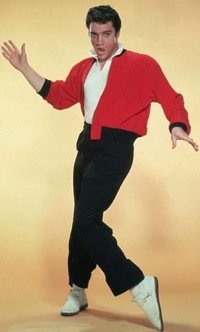
“I never did want my hair cut. I wear long hair and sideburns because some people look better with long hair. I do because my face is long. The fans like it long, I guess, because they first saw me that way.”—Elvis
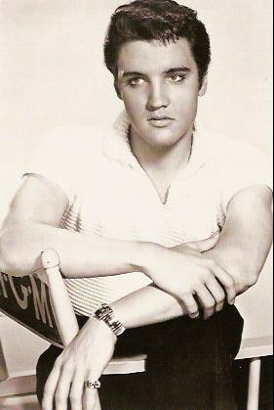
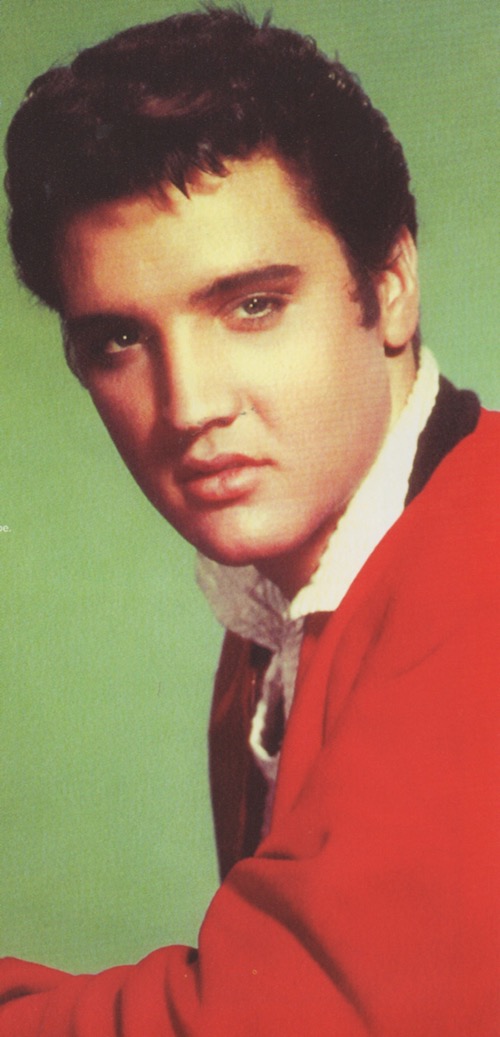
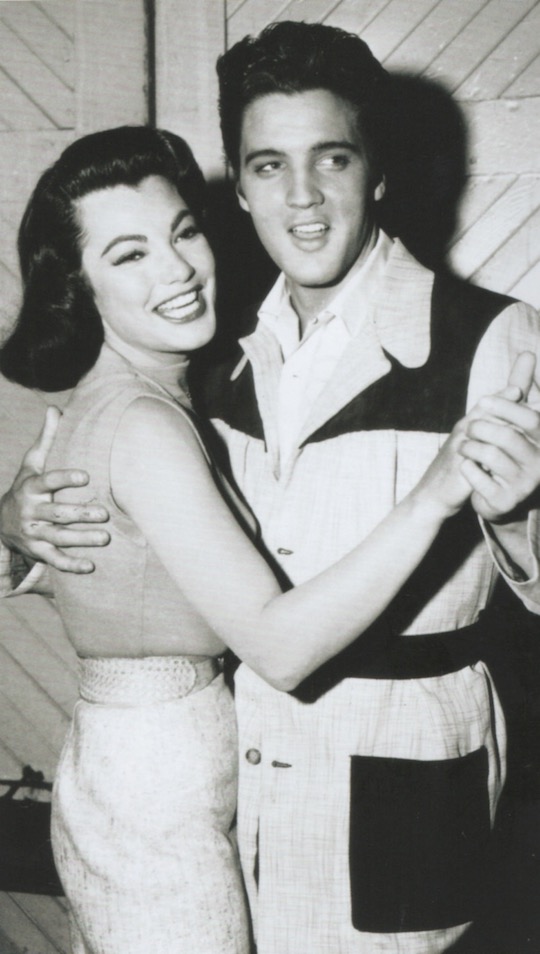
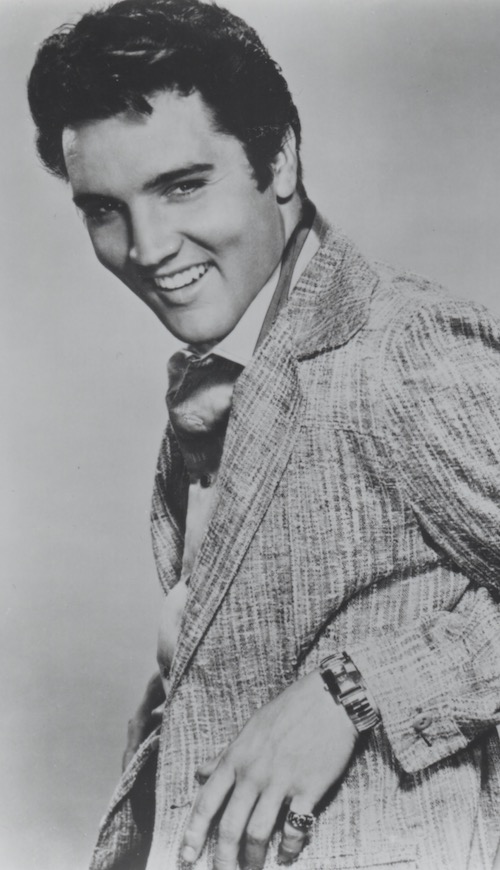
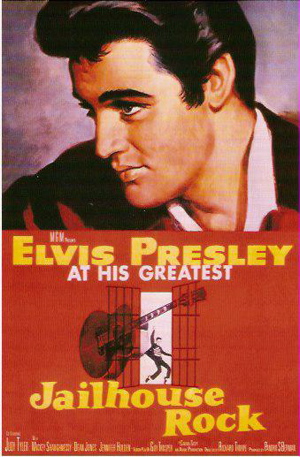
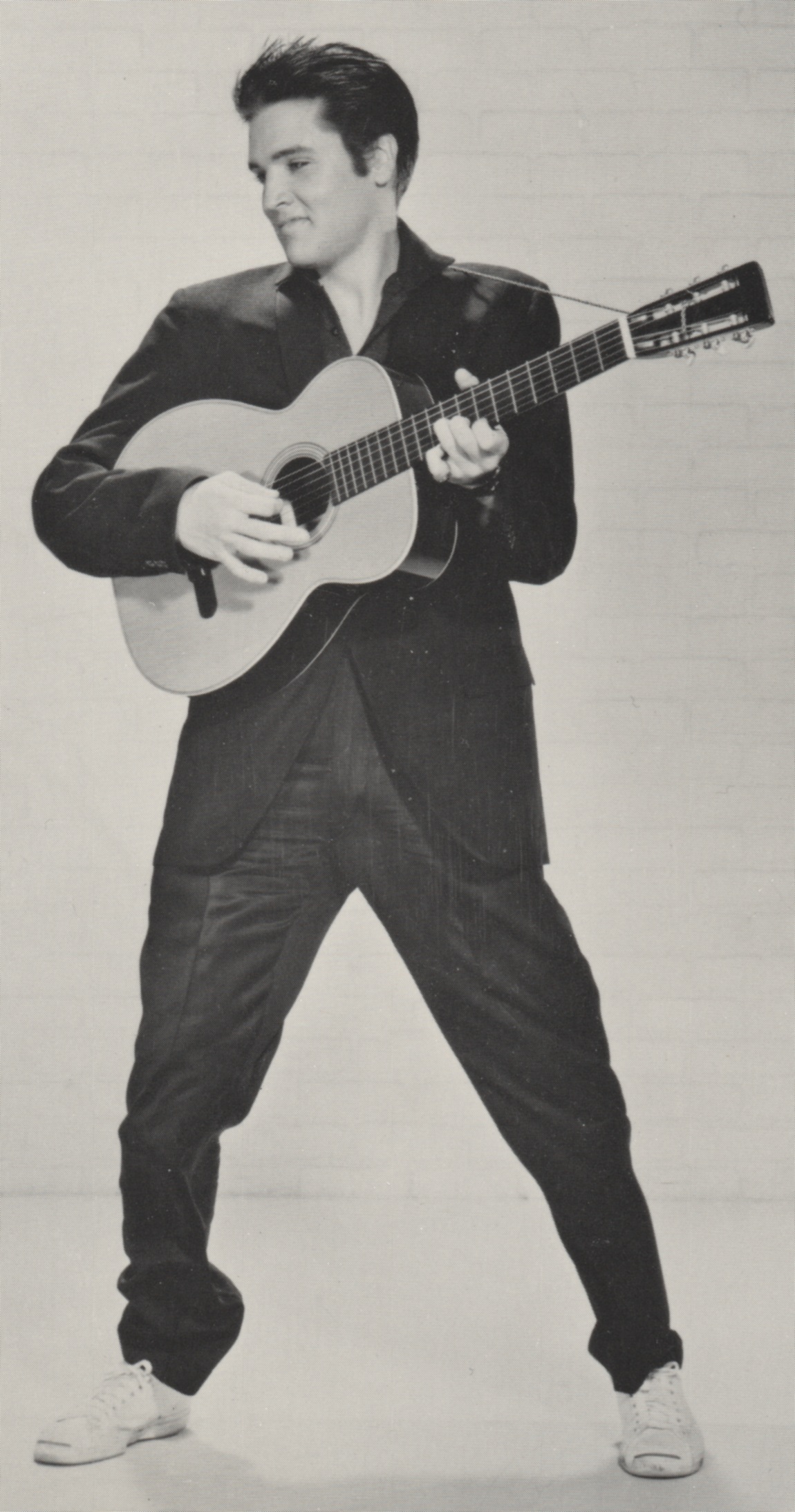
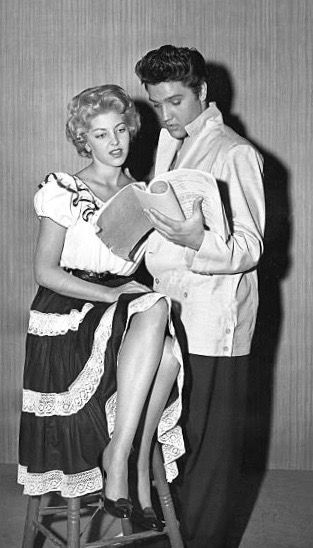
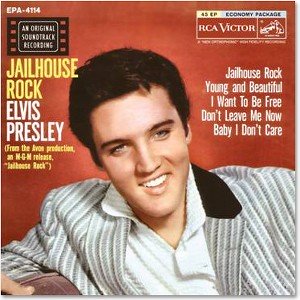
"We talked about our careers and Elvis’ new home. We even sang a few songs. He’s the most popular singer in the country today because he’s sincere. Elvis is warm and friendly — and he’s got a pixie side, too."
—Judy Tyler
